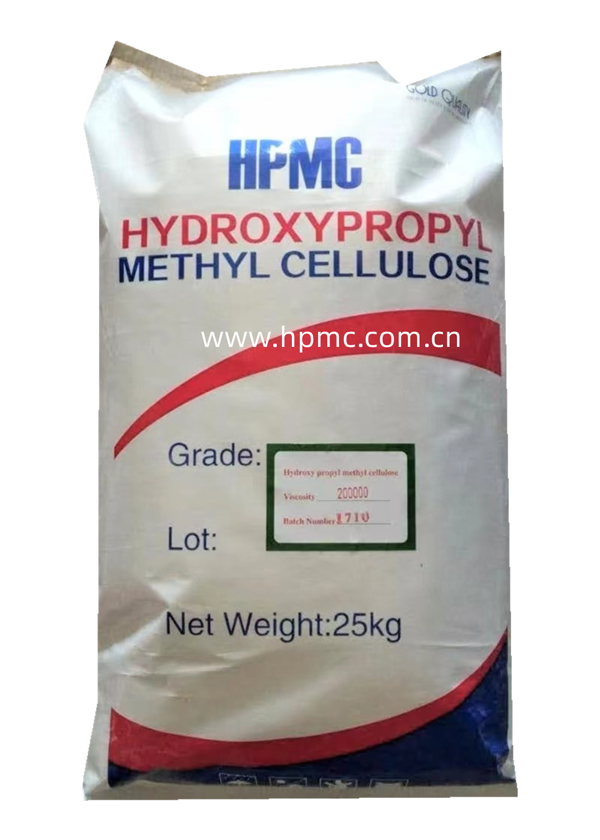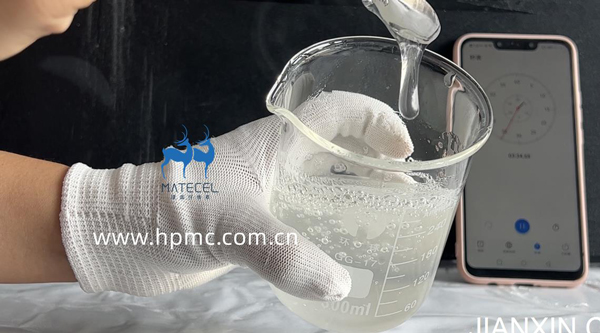Jul. 28, 2022
Matecel Cellulose (HPMC)
Hydroxypropyl methyl cellulose is in recent years production, dosage are rapidly increasing cellulose varieties.It is made of refined cotton after alkali treatment, with propylene oxide and chloroform as etherifying agent, through a series of reactions and made of non-ionic cellulose mixed ether. The degree of substitution is generally 1.2~2.0.Its properties by the content of methoxy and hydroxypropyl content of the proportion of different, and have a difference.
(1) Hydroxypropyl methyl cellulose is easily soluble in cold water, hot water will encounter difficulties.However, its gelation temperature in hot water is significantly higher than that of methylcellulose.Dissolution in cold water, compared with methyl cellulose, also greatly improves.
(2) The viscosity of hydroxypropyl methyl cellulose is related to the size of its molecular weight, and the higher molecular weight is the higher viscosity.Temperature also affects its viscosity. As the temperature increases, the viscosity decreases.But the effect of its high viscosity temperature is lower than that of methylcellulose.The solution is stable when stored at room temperature.
(3) Hydroxypropyl methyl cellulose water retention depends on the amount of its addition, viscosity, etc., the same amount of water retention rate is higher than that of methyl cellulose.
(4) Hydroxypropyl methyl cellulose is stable to acid and alkali, and its aqueous solution is very stable in the pH range of 2~12.Caustic soda and lime water do not have much effect on their properties, but the alkali can accelerate the dissolution rate and improve the viscosity pin. Hydroxypropyl methyl cellulose has stability to general salts, but when the concentration of salt solution is high, the viscosity of Hydroxypropyl methyl cellulose solution has a tendency to increase.
(5) Hydroxypropyl methyl cellulose can be mixed with water-soluble polymer compounds to become a uniform, higher viscosity solution.Such as polyvinyl alcohol, starch ether, vegetable gum and so on.
(6) Hydroxypropyl methyl cellulose has better enzyme resistance than methyl cellulose, and the possibility of solution enzyme degradation is lower than that of methyl cellulose.The adhesion of hydroxypropyl methyl cellulose to mortar construction is higher than that of methyl cellulose.

Hydroxyethyl methyl cellulose (HEMC)
By the refined cotton after alkali treatment, in the presence of acetone, with ethylene oxide as etherifying agent for reaction and made.The degree of substitution is generally 1.5~2.0.It has strong hydrophilicity and is easy to absorb moisture.
(1) Hydroxyethyl methyl cellulose is soluble in cold water, and it is difficult to dissolve in hot water.The solution is stable at high temperature and does not have gel properties.It can be used for a long time at high temperature in mortar, but its water retention is lower than that of methyl cellulose.
(2) Hydroxyethyl methyl cellulose on the general acid and base have stability, the base can accelerate its dissolution, and slightly improve the viscosity, its dispersion in water than methyl cellulose and hydroxypropyl methyl cellulose slightly worse.
(3) Hydroxyethyl methyl cellulose has a good anti-hanging performance for mortar, but a longer retarding time for cement.
(4) some of the domestic production of hydroxyethyl cellulose, due to water content, high ash and its performance is significantly lower than that of methyl cellulose.

HPMC (hydroxypropyl methylcellulose) and HEMC (hydroxyethyl methylcellulose) are both cellulose ethers commonly used in various industries, including construction. While they share some similarities, there are important differences between the two. Here are the key distinctions:
Chemical Structure: The main difference between HPMC and HEMC lies in their chemical structure. Both are derivatives of cellulose, but they have different substituent groups. HPMC has hydroxypropyl and methyl groups attached to the cellulose backbone, while HEMC has hydroxyethyl and methyl groups.
Degree of Substitution: Degree of substitution refers to the average number of hydroxypropyl or hydroxyethyl groups attached to each anhydroglucose unit in the cellulose chain. HEMC generally has a higher degree of substitution of hydroxyethyl groups compared to HPMC's degree of substitution of hydroxypropyl groups. The difference in degree of substitution affects their solubility, gelation properties, and other characteristics.
Solubility: HPMC and HEMC have different solubility characteristics. HPMC is more soluble in cold water, while HEMC is soluble in hot water. The solubility of HEMC in hot water makes it suitable for applications that require rapid dissolution or gelation, such as in pharmaceutical formulations. HPMC's solubility in cold water allows for more versatile applications in construction and other industries.
Viscosity: HPMC and HEMC can exhibit different viscosity profiles. HEMC generally provides higher viscosity at lower concentrations compared to HPMC. This makes HEMC more suitable for applications requiring thicker coatings or higher viscosity solutions, while HPMC offers more flexibility in adjusting viscosity based on the desired application.
Application Differences: While HPMC and HEMC are both used in construction applications, they may have slightly different performance characteristics in specific formulations. For example, HPMC is often preferred in tile adhesives due to its excellent water retention, workability, and sag resistance properties. On the other hand, HEMC may be favored in certain cement-based products where higher viscosity and faster gelation are required, such as self-leveling compounds or cementitious coatings.
It's important to note that the specific properties and performance of HPMC and HEMC can vary depending on the manufacturer and grade of the cellulose ether. It's recommended to consult the product data sheets and technical specifications provided by manufacturers to ensure the appropriate selection and use of these cellulose ethers for specific applications.
Shijiazhuang Henggu Jianxin Cellulose Co., Ltd.
Chemical Industrial Park, Xinji City, Hebei Province, China Post Code: 052360
Copyright 2023 Shijiazhuang Henggu Jianxin Cellulose Co., Ltd. All Rights Reserved